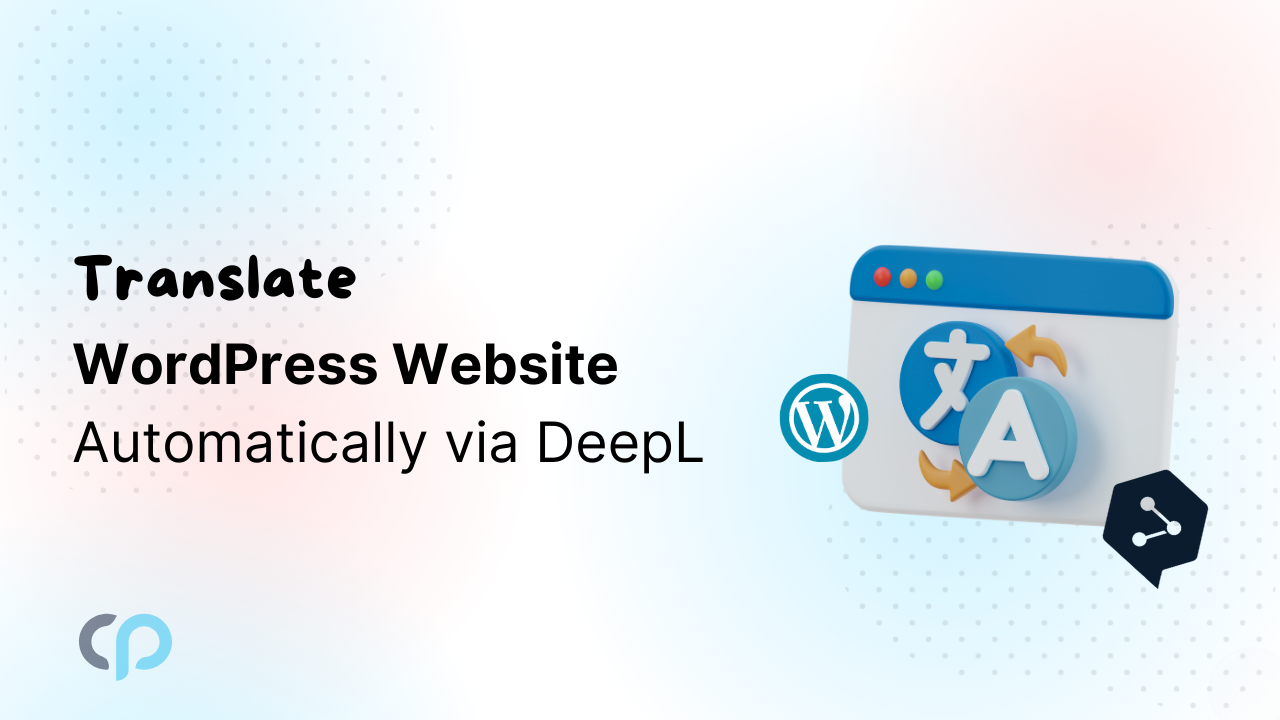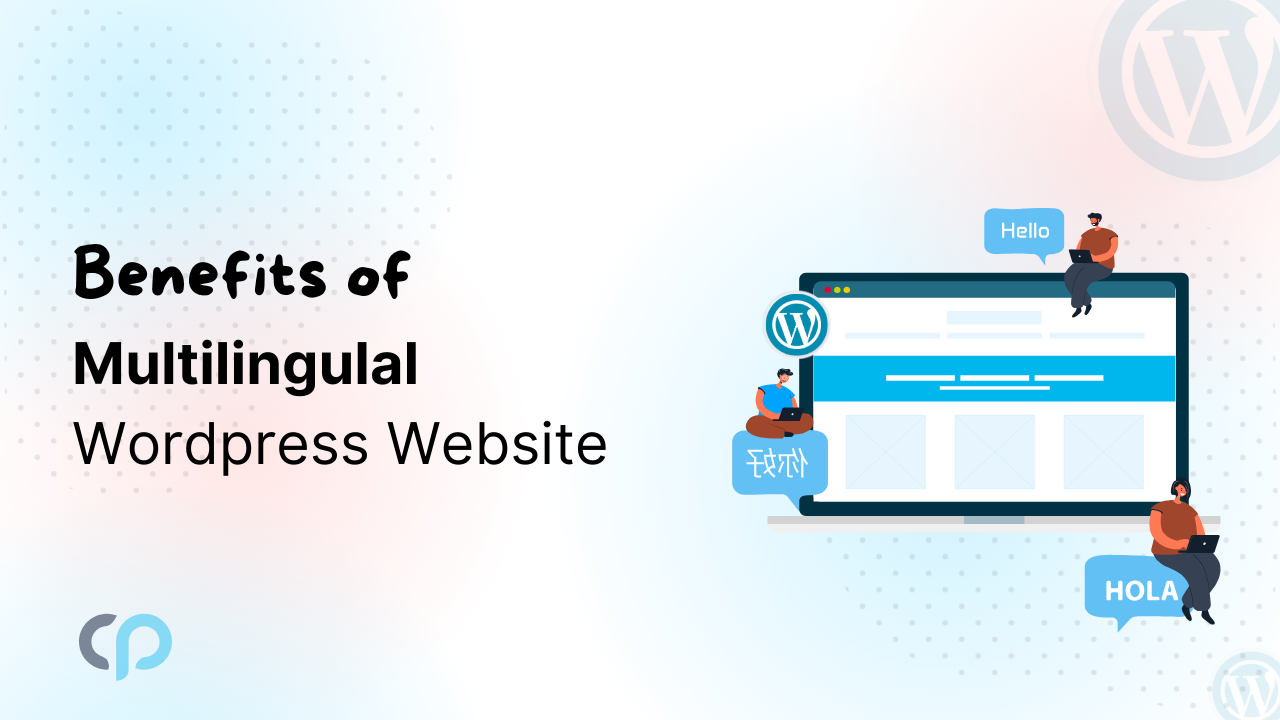One of the challenges faced in website development is making websites multilingual, which can be time-consuming and frustrating. While there are several WordPress plugins like Loco Translate, Polylang, and TranslatePress, they often require users to manually input the translated text.
AI Translations offers a better solution by using advanced techniques like deep learning to automate translations. If you want to make your website multilingual but are tired of manual translation, this article will guide you through plugins that use AI to automatically translate your website.
Limitations of manual translation methods
Translating a website manually may seem like the most reliable approach, but it comes with hidden challenges that can slow down growth and limit your global reach.
Imagine you’re launching a website for your business. At first, you hire professional translators to manually translate each page, to ensure accuracy and quality. However, as your website expands, the challenges also expand.
Now, every new blog post, product description, or update requires another round of translation, demanding time. The costs increase, and hiring different translators results in inconsistencies, some pages are communicating formally, while others have a casual tone.
Meanwhile, by using AI-powered translations you can reach international audiences faster, ranking higher on search engines, and saving both time and money.
What are AI Translations?
AI translations are the use of artificial intelligence technologies, such as machine learning and deep learning, to automatically convert text from one language to another.

Unlike traditional methods, AI translations don’t rely on manual input or simple word-to-word replacing. Instead, it understands the context and meaning of the content to provide more accurate and natural translations. AI-powered tools can process large volumes of text quickly, making them ideal for creating multilingual websites.
Benefits of using AI translations
- Time-Saving
AI-powered translation tools automate the process, allowing you to translate your website’s content without manual effort. - Cost-Effective
With AI translations, there’s no need to hire professional translators, reducing costs while maintaining quality. - Accuracy and Context
AI tools analyze the context and meaning of the content, delivering translations that are more natural and accurate. - Multilingual SEO Support
Many WordPress AI translation plugins optimize your translated content for search engines, helping your site rank higher in multiple languages - Faster Updates
AI can quickly translate new or updated content without extra work.
Top AI Translation Plugins for WordPress
Each AI translation plugin offers unique features that set them apart in the WordPress ecosystem. Let’s explore the top AI translation plugins and what makes each of these plugins ideal for translating your WordPress website in 2025.
- AutoPoly – AI Translation For Polylang
- AI Translation for TranslatePress
- Automatic Translate Addon For Loco Translate
AutoPoly – AI Translation For Polylang
Polylang is a popular WordPress plugin for creating multilingual websites. While Polylang itself does not offer built-in automatic translation. So, we have created an addon for Polylang that uses Yandex translator and Chrome’s built-in AI (AI translation) to translate strings within a few minutes.
How it works?
AutoPoly – AI Translation For Polylang uses Chrome’s built-in AI for real-time translations directly in the WordPress editor. This integration enables quick, accurate translations without any manual work. Let’s see how to do it:
- Since AutoPoly – AI Translation For Polylang is an addon for Polylang, you’ll first need to set up the Polylang plugin.
Need help setting up Polylang? Check out our detailed guide! - Choose an existing page or create a new one. From the Languages settings tab, under Translations, click the + icon.
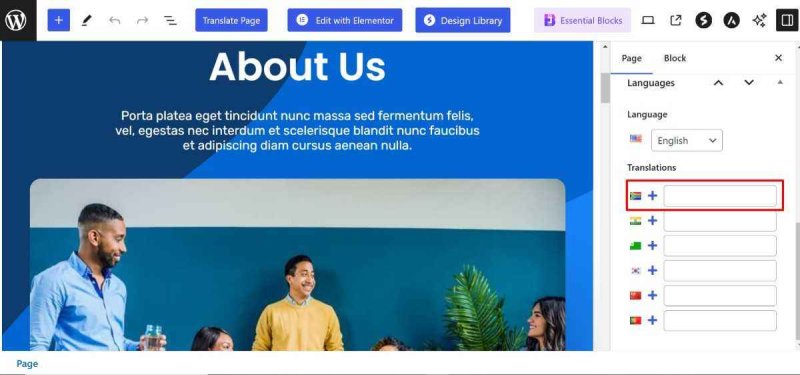
- A prompt will appear asking if you want to duplicate the original page content. Select “Yes”.
- Next, select a Chrome AI as a Translation Provider.
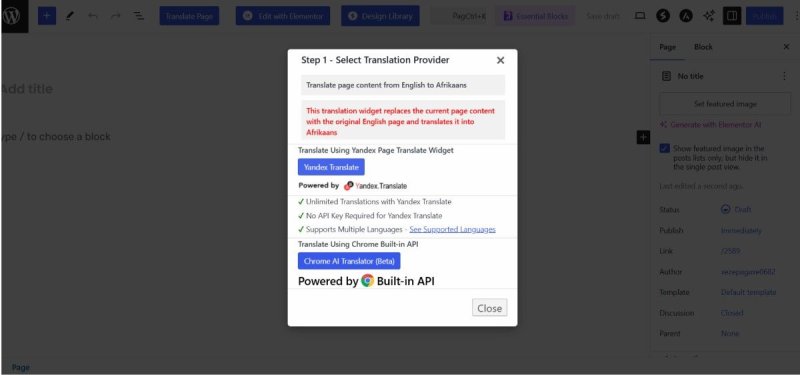
- A tab containing both the source text and translation text will appear.
- Click Translate, and the plugin will start the translation process.
- Click the Update Content button to save the translation.
Additionally, if you are looking for a Polylang translation that works with Elementor, then there is good news for you, now you can easily translate your webpages in Elementor using the Polylang plugin.
AI Transation for TranslatePress
AI Translation for TranslatePress enhances the TranslatePress plugin by automating the website translation process for WordPress users. This addon supports integration with services like Yandex and Google Translate, enabling one-click translation of page content without the need for API keys.
The free version utilizes the Yandex Translate widget, while the pro version expands functionality to include the Google Translate widget and Chrome’s built-in AI translator, offering unlimited AI translations without additional costs.
How it Works?
- Navigate to the page or post you want to translate.
- Click on the “Translate Page” button added by the TranslatePress plugin.
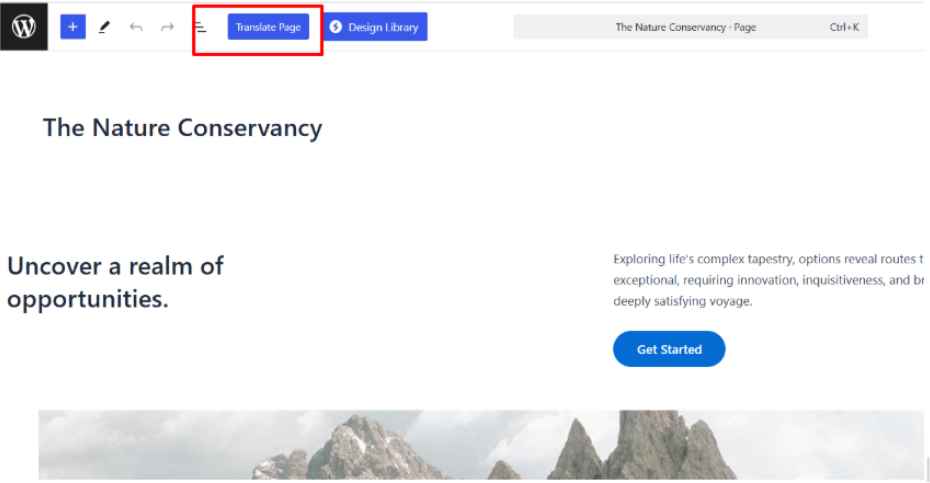
- In the translation editor, select the language you want.
- Click on the “Auto Translate” button.
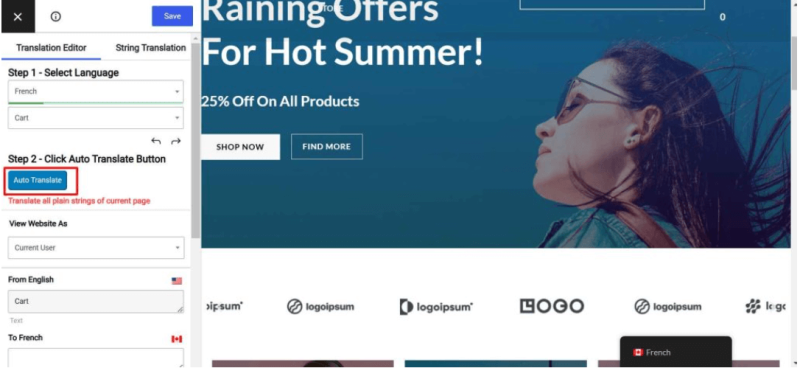
- Select Chrome AI as a translation provider.
- A window will open with website content. Click on Translate. This will automatically start translating your website content to the language you have selected.
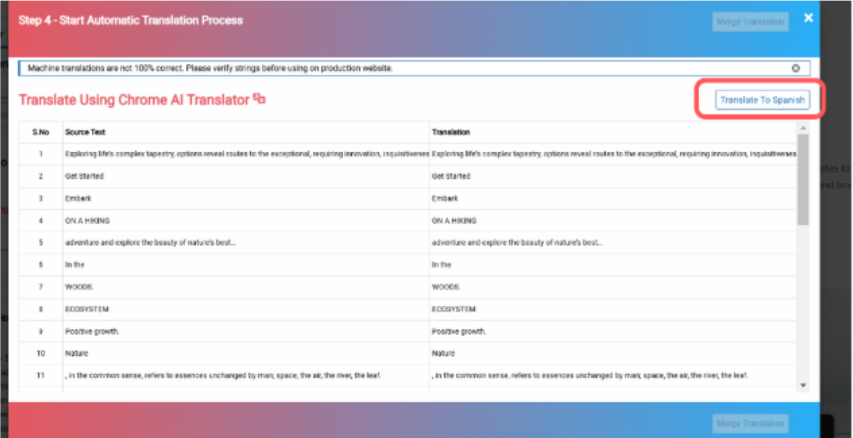
- Review and edit the translated content if needed and save it.
Automatic Translate Addon For Loco Translate
Automatic Translate Addon For Loco Translate enhances the Loco Translate plugin by enabling automatic translation of WordPress themes and plugins.
It integrates with services like Yandex (in the free version) and, Google, DeepL, and AI models such as ChatGPT, Gemini, and Chrome AI (in the Pro version) for AI translations, allowing users to translate content into multiple languages with a single click.
How it Works?
- As this plugin is an addon for Loco Translate you need to make sure that Loco Translate is installed and activated.
- Navigate to Loco Translate in your WordPress dashboard and choose the plugin or theme you want to translate.
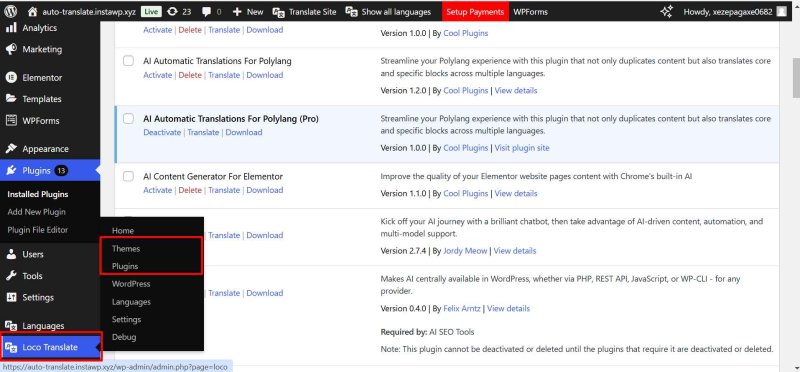
- Select the desired language, and click Start Translating.
- Click on the Translate button and a prompt will appear to choose the translation provider.
Via Chrome AI
Choose Chrome AI Translator to translate all content automatically using Chrome AI’s capabilities. It enables real-time translation directly within the browser, without any paid API services.
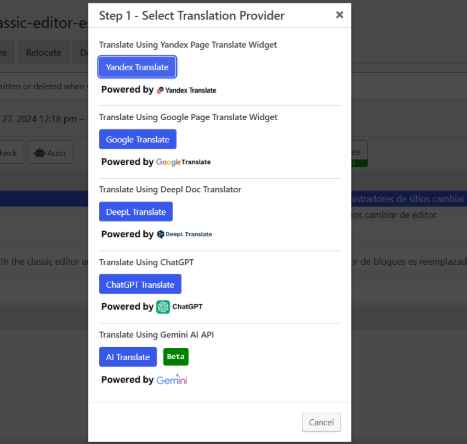
Via ChatGPT
If you are using ChatGPT as a Translation Provider, there are some steps to do:
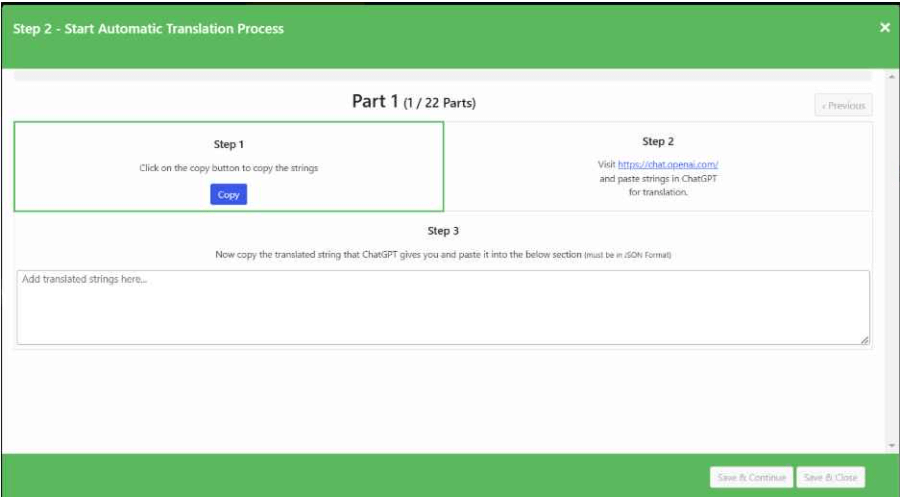
Step 1: Click the Copy button to copy the strings, then paste them into ChatGPT. OR
Step 2: Manually copy all the strings and paste them into ChatGPT for translation.
Step 3: Input the translated strings provided by ChatGPT back into the system.
Via Gemini AI
If you want to translate using Gemini AI, you must first add the Gemini API key. Check out our documentation to know how to add the API key.

- Once the translation is completed, merge the translations and save it.
Comparison: Which AI Translation Plugin is Right for You?
| Feature | AutoPoly – AI Translation For Polylang | AI Translation for TranslatePress | Automatic Translate Addon For Loco Translate |
|---|---|---|---|
| Plugin Type | Polylang | TranslatePress | Loco Translate |
| Translation Providers | Yandex, Chrome AI | Google, DeepL, Chrome AI | Google, DeepL, Chrome AI, Gemini, Chat GPT |
| Chrome AI integration | Yes | Yes | Yes |
| Manual Editing | Yes | Yes | Yes |
| Support Page Builders | Yes | Yes | Limited |
| Works On | Frontend | Frontend | Backend |
If you’re looking to expand your site’s reach and make it multilingual, these translation plugins are a must-have. So, start using AI translation plugins today and save time, cost and simplify the translation process.


